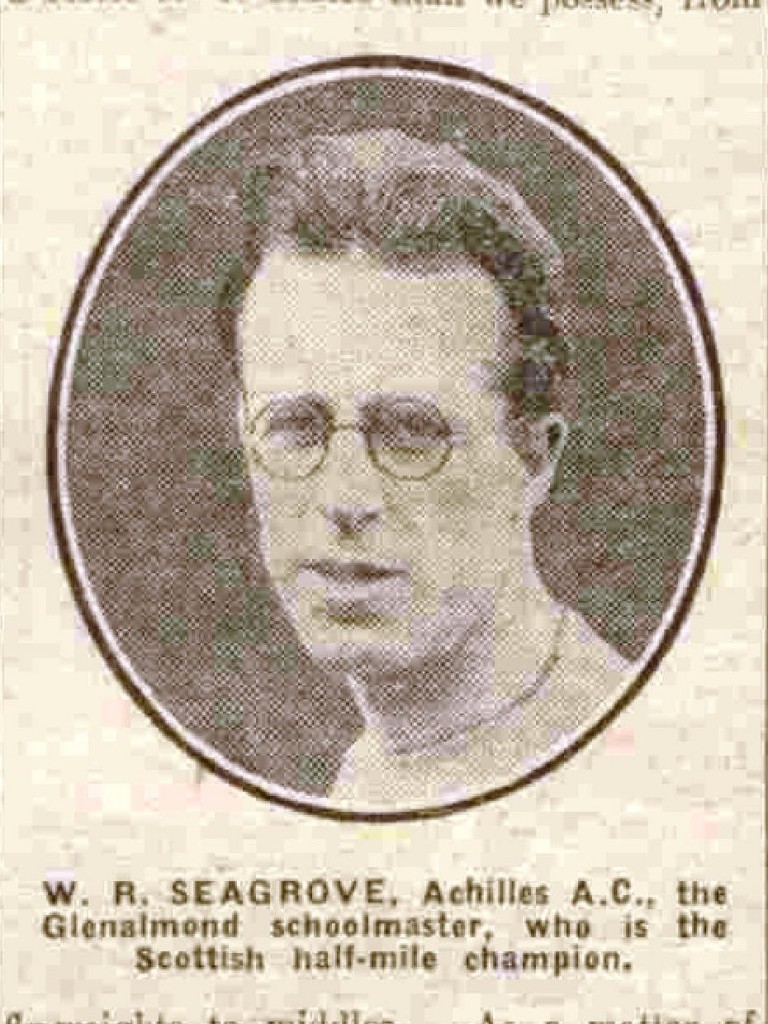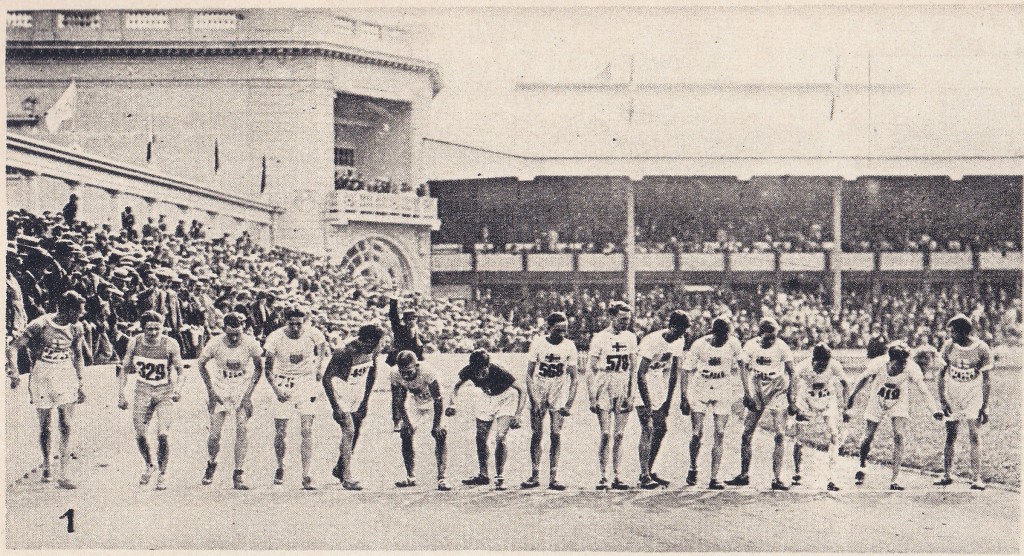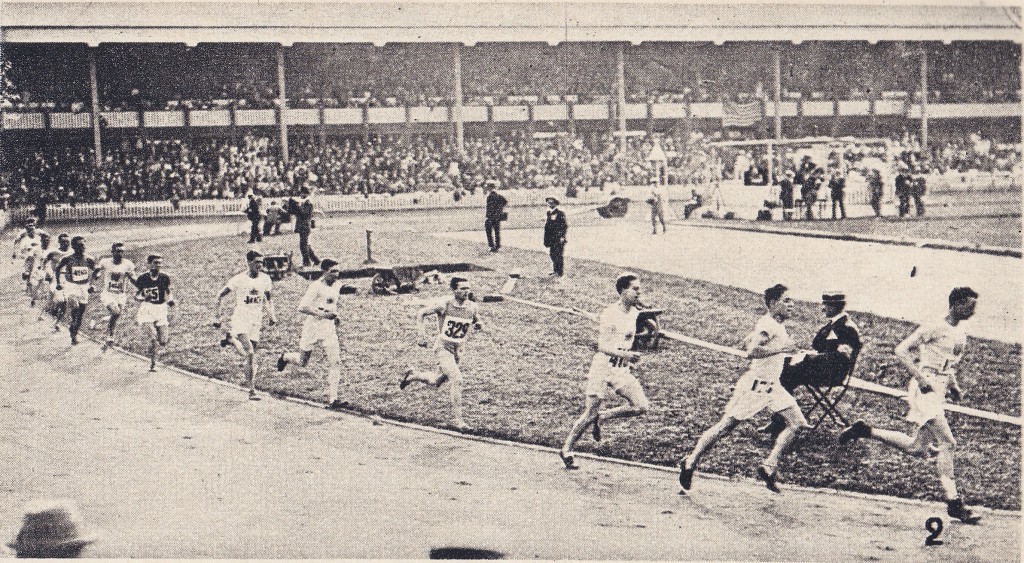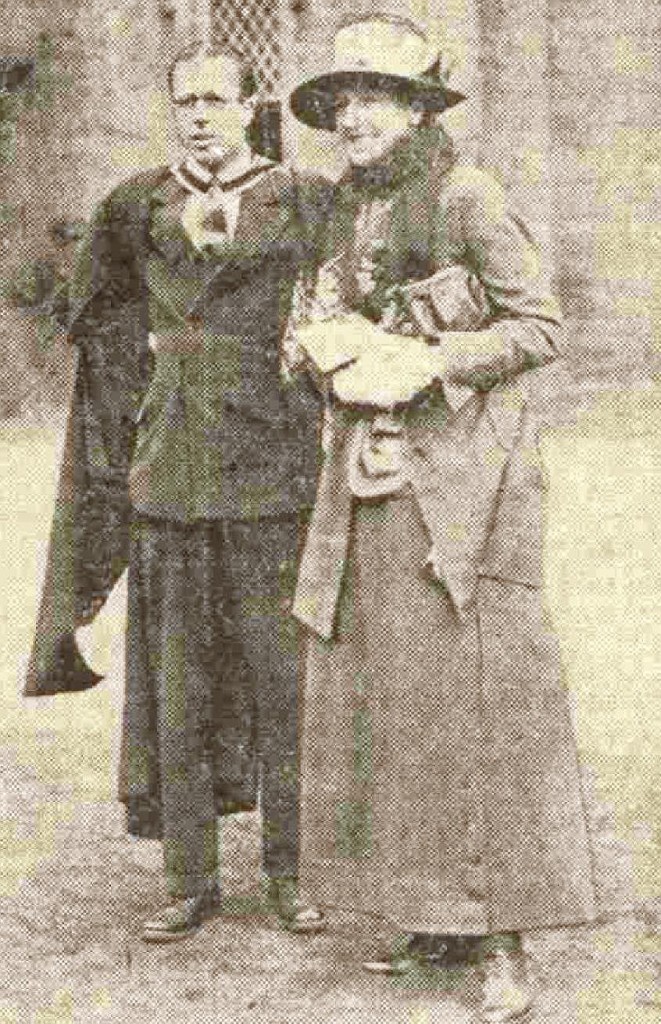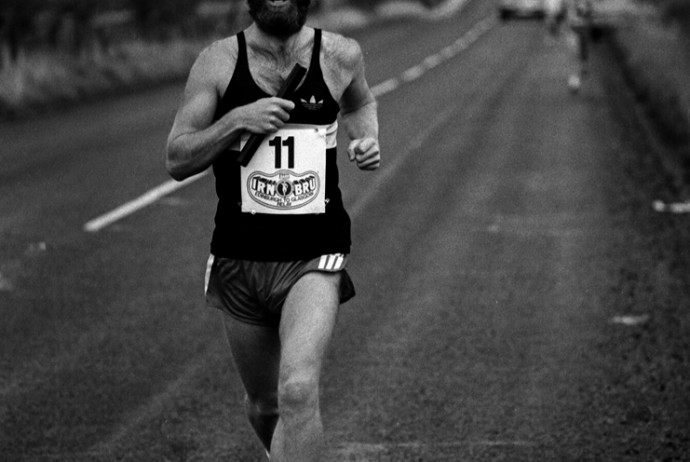
Author: Admin

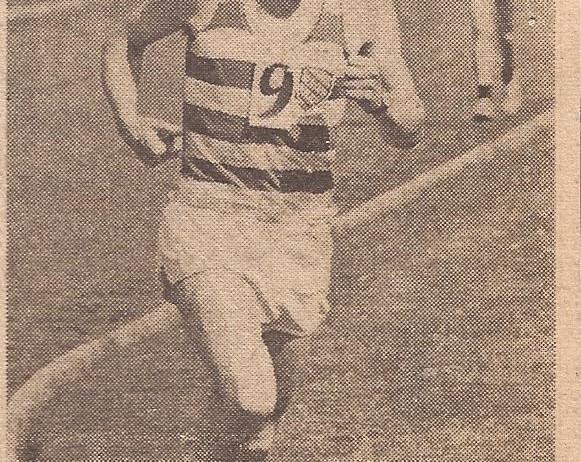
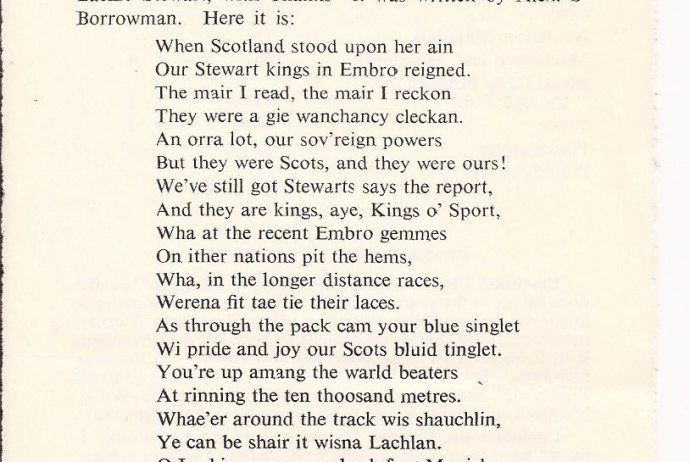
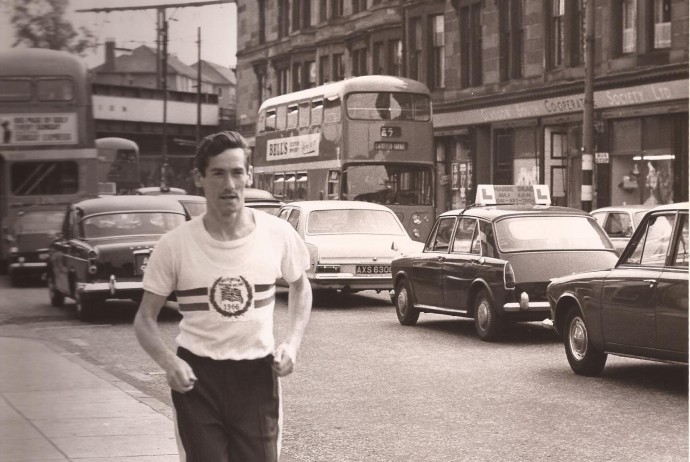
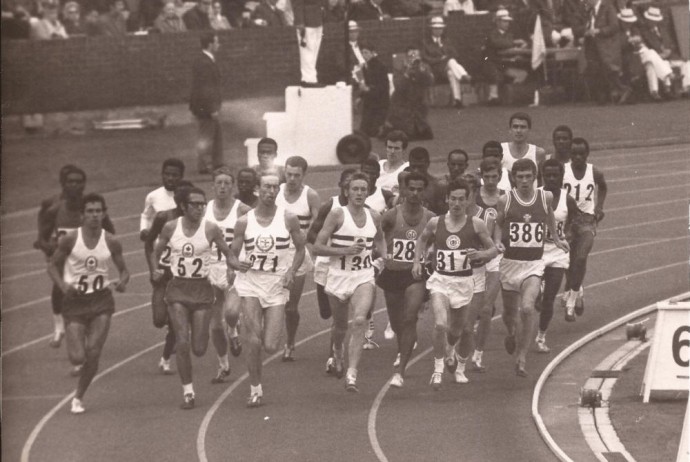
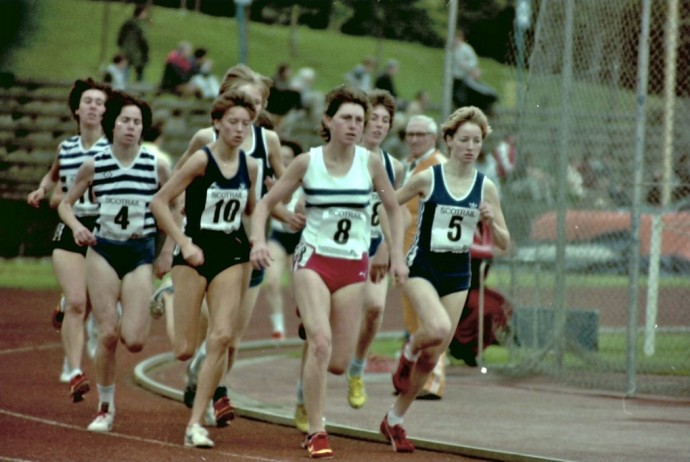
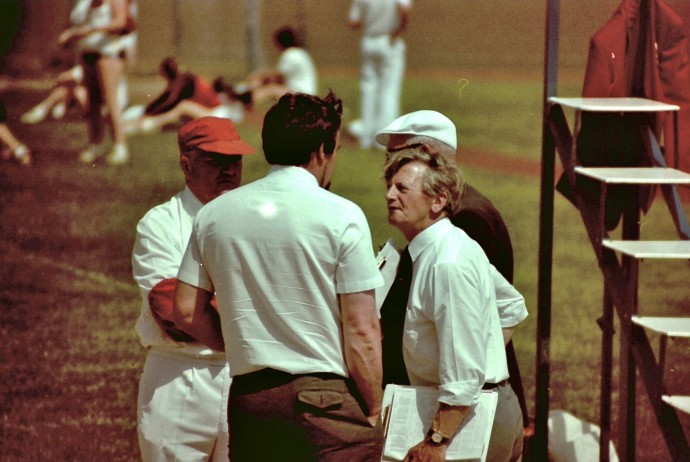
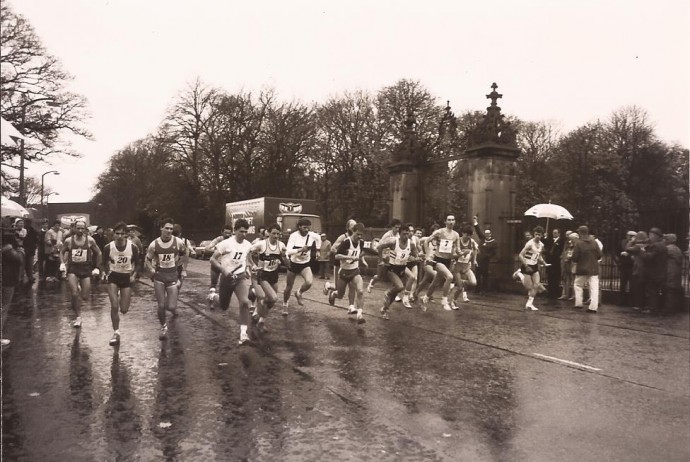
WR Seagrove
Scotsmen who have run in the Olympic Games are fewer in number than we might like; Scotsmen who have won medals in the Olympic Games are even fewer and further between. Understanding that, we should maybe be more familiar with those who have done so than we are. Among those in the second category is WR Seagrove who won two silver medals – one each in the Games of 1920 and 1924, and yet he is almost totally unknown even among those who consider themselves well versed in the sport. Given the difficulty in getting details of races for a man who raced almost entirely in University athletics in the 1920’s, what follows will be more career highlights with a look at the sport as it was then.
*
Seagrove was born and brought up in London and educated at Highgate School which he left in 1917. Although he won SAAA championships at 880 yards and the Mile, and the AAA’s title in the Mile, he won his Olympic medals in the 3000m team race and was considered to be at his best over two miles. He also competed over the country and won the annual Oxford v Cambridge match.
William Raymond Seagrove was born on 2nd July 1898. He was a promising athlete while at school and in 1916 won the 880 yards at the London Schools meeting. Leaving school in April 1917, he served in the Army as a lieutenant in the Worcestershire Regiment during World War 1. After demob he attended Clare College, Cambridge and his athletics flourished.
Fifth in the AAA’s mile in 1920 but better known for his running over longer distances, he was selected for the 1920 Olympics in Antwerp as a member of the 3000m team. The Games were held in Belgium, in Antwerp, where he finished sixth and with team mates Albert Hill and Joe Blewitt he won silver for the team race. The race was held on Saturday 20th and Sunday 21st August. In the heats on Saturday, Britain won the first heat from Sweden and there were five GB runners forward including Duncan McPhee who was second. France won the second heat from the USA – only two teams finished this race. On Sunday in the final, Blewitt was fifth, Albert Hill was seventh, Seagrove was ninth and James Hatton was tenth. Duncan McPhee did not finish. With only the first three scoring, Seagrove won his medal. Sweden, France and Italy in that order made up the field in the team race.
Line up at the start of the 1920 Olympic 5000m : Seagrove second from the right, Nurmi on the left
Before competing in the 3000m team event, Seagrove had already run in heat and final of the 5000m on Monday, 16th and Tuesday,17th August. Running in Heat Three, he finished third in an interesting race – first was Carlo Speroni (Italy) in 15:27.6, second was Paavo Nurmi (Finland) in 15:33.0, third was Seagrove in 15:33.6. The result in the final was:
1. J Guillemot (France) in 14:55.6, 2. Nurmi 15:00.0, 3. Eric Backman (Sweden) 15:13, 4. T Koskenniemi (Finland) 15:17, 5. Joe Blewitt (GB) 15:19; 6. W Seagrove 15:21.0, 7. C Speroni . There were 13 finishers. It is daunting to think of four Olympic races within seven days.
There is film on youtube ( https://www.youtube.com/watch?v=f3rwH5ddNkU ) purportedly of the 1920 Olympic 5000m final but according to the programmes and photographs taken, the shirts and the numbers on them do not match (eg Nurmi and Guillemot both wore dark blue shirts). The ‘Glasgow Herald report on the race read: “The three Americans jumped to the lead at the start, with Blewitt and Seagrove following close behind, together with Guillemot. In the third lap the Italian Speroni took the lead. After the first mile Nurmi (Finland) took the lead followed by Guillemot, Seagrove and Blewitt 50 yards behind. A mile from home Nurmi and Guillemot were leading by 100 yards from Koskennieme, while Blewitt was sixth. When 200 yards behind the leaders Seagrove stopped. The Frenchman and the Finn continued to hold the lead until the last 200 yards. Guillemot sprinted and won by 20 yards in 14 min 55 3-5th sec.”
1920 Olympic 5000m final: Seagrove third from right.
Seagrove was also a cross-country runner and in December 1920 took part in an interesting race. Oxford & Cambridge had travelled to America in May 1920 for a match against Cornell and Yale. The genesis of the race as well as coverage of it is described in an OUCC Old Members Newsletter of February, 2007. I quote:
“On their return home, the Oxford captain (Evelyn Montague of Magdalen) raised the possibility of inviting the Cornell cross-country team to a race in England with his counterpart, William Seagrove of Clare. Seagrove put the proposal to his committee and the response was positive, although, as he pointed out to Montague, Cambridge “could not undertake any financial responsibility.” With an agreement in principle, the two captains wrote formally to Cornell to invite them to a race between a combined Oxbridge team. Later that summer, on receiving Cornell’s acceptance, the two set about finalising the arrangements.
Montague and Seagrove then consulted Cornell on the date of the race and the size of the teams: “As regard numbers, we would suggest seven a side to run and five to count, but if you would prefer to bring a smaller team, we should be delighted to fall in with any alteration you may suggest. As regards the date, we would like to leave that point entirely to you to settle as is most convenient for yourselves. The Thames H. & H. can let us have the course any time in December. We would suggest however, that other things being equal, we would prefer the match to be as early in December as is convenient to you, as this will interfere less with the reading work which undergraduates at English universities have to get through during the vacation.”
The original date had to be altered to allow the Americans time to get used to English cross-country courses – they differed substantially from those found in America. Water crossings and ploughed land were both a novelty.
Oxford/Cambridge won with 26 points to 29, Seagrove finishing in seventh to give the home team four in the first seven and with seven to run and four to count over the seven and a half miles trail. The article in full can be found at http://www.ouccc-oldmembers.co.uk/OUCCC_OldMembers_Newsletter_Feb2007.pdf
A Commemoration Day at Trinity College, 1926
In winter 1921 Seagrove won the annual Cambridge v Oxford challenge cross-country race. The ‘Varsity race was a very important one: such indeed was its sign ificance that Cambridge had automatically awarded the first Cambridge man home a full Blue. (In 1922 Seagrove won the ‘Varsity Three Miles on the track). Like all good athletes at these universities, he competed for the Achilles Club. They had what they called the Transatlantic Series – matches against Harvard and Yale held every two years – in England, then two years later in USA, then two years later back in England, etc. These had been going on since 1894, pre-dating the Olympics. In 1920 the venue for the match was in Harvard. On 23rd July, 1921, Seagrove competed over the Mile at Harvard Stadium where he finished second. The reports on the event showed a marked contrast depending on which side of the Atlantic you found yourself. The New York Times version started: “BRITISH ATHLETES BOW TO AMERICANS; Harvard/Yale team wins eight of ten events from Oxford/Cambridge team; Gourdin leaps to record Negro wearer of crimson; RUDD WINS QUARTER-MILE RUN; Milke run, won by Stallard gives Britons their only other point; — Six Meet Figures Beaten; Gourdin a Double Victor; Like a shot from a gun. Rudd clips record; BRITISH ATHLETES BOW TO THE AMERICANS; ….” and so on. The Glasgow report read:
“Under splendid skies with the stars and stripes and the union jack fluttering in the breeze, a large gay crowd this afternoon at the Harvard Stadium witnessed the Yale and Harvard track representatives defeat the Oxford and Cambridge representatives in competitions in what is claimed to be a new world record and several other records at meets between combined university teams.” Despite the defeat it was a very good Achilles team with Bevil Rudd winning the quarter-mile and Hyla Stallard the Mile.
1924 was probably Seagrove’s best year. He won the SAAA mile on 14th June defeating young Tom Riddell in 4:29.6. “The Glenalmond master and old Cantab’ won by eight yards. In the AAA’s at the White City one week later he won the Mile by only three yards in 4:21.2 from HA Johnston of Herne Hill AC while Hyla Stallard ran in, and won, the 880 yards in 1:54.6. Since it was Olympic year, there was no Triangular International between Scotland, Ireland and England but, no matter, Seagrove was bound for Paris where 44 nations competed against each other.
In the Olympics of 1924, Seagrove ran in only one event – the 3000m team race. The heats were on Friday, 11th July and the final on Sunday, 13th. Seagrove (9th) was fourth Briton in the heats behind Walter Porter (3rd), Herbert Johnston (5th) and Bertram MacDonald (6th). The Finnish team of Nurmi, Ritola and Tala was first in their heat with their men in first, second and third. The final was won by Finland with their counting runners being Nurmi first, Ritola second and Katz fifth. The British runners were MacDonald third, Johnston fourth, George Webber seventh, Porter tenth, Arthur Clark eleventh and Seagrove sixteenth. If Nurmi was the athlete of the Games, Eric Liddell with his 400m victory and 200m bronze was not far behind.
Having graduated from University, Seagrove was a master at Glenalmond School in Perthshire where he no doubt encouraged the sport of athletics – it is known that there were matches between the Atalanta Club (made up of students from the four ancient Scottish Universities) and Glenalmond with the older runners making generous allowances to the schoolboys.
He was not finished with serious competition yet though and in June 1926 he won the SAAA half mile championship. He won by three yards from Tom Riddell in 1:58.2 which was a new championship best time. He also competed in the Mile where he was noted among the ‘also ran’ contingent. This time there was a triangular international where Seagrove finished second to CR Griffiths of England in the half mile. Leaving Glenalmond to found a prep school in Seaford in Sussex where he was headmaster and mathematics master. Interestingly enough he competed for the Scottish universities Atalanta Club on 11th July, 1927, against English Universities other than Oxford and Cambridge. He is reported to have run as Achilles in the half mile but the report states that he was running for Atalanta. In addition he ran the first stage of the medley relay (the half mile leg) for Atalanta.
Like many university men of his day, he stopped running fairly suddenly and led a varied life thereafter. He ran the Normansal School choir, introduced boys to opera and organised annual visits to the Vienna Boys Choir concerts in Brighton. He was master of ceremonies and umpire at the annual sports day: eight-year-olds competed in pole vault, long jump, shot as well as the usual events. Long distance running was encouraged. The connection with his old University was maintained and in 1938 he had the honour of giving the speech at the Annual Dinner of the Achilles Club. It is clear from the above that the world of athletics as experienced by Seagrove was vastly different from that of many athletes of the time and almost totally unrecognisable to modern athletes.
He himself was also an accomplished pianist and violinist. He died on 5th June, 1980 in Seaford, Sussex at the age of 81.
SAAA Ten Miles Track Championships: 1901 – 1910
This decade belonged to Tom Jack of Edinburgh Southern Harriers. His record – ran 7, won 6, and third in the other. The greatest Scottish ten mile runner since Andrew Hannah of Clydesdale Harriers. We will come to him but first …
The 1901 Ten Mile Championships was won by David Mill of Clydesdale Harriers – who had been second to J Paterson the previous year – in 55:16.4. No other competitor finished the race which was held at Hampden Park, Glasgow, on April 6th. Mill is an interesting character – a member of Greenock Glenpark Harriers, he joined Clydesdale Harriers at the peak of his powers and won the Scottish Cross-Country Championship in 1901. He was also Clydesdale Harriers club champion that year but when he won the SAAA 10 miles, he was noted in the ‘Glasgow Herald’ as being from Greenock Glenpark. The report read: “As if to show that there was no room for dubiety regarding the genuineness of his victory in the recent cross-country championship, DW Mills of Greenock won the ten mile championship of Scotland on Friday night. Paterson, last year’s winner did not compete, but JJ McCafferty of West of Scotland Harriers, who has recently come to the front as a long distance runner, stripped, but six miles seemed to satisfy him. Up to this point the race was interesting as such, and there was all the promise of keen competition, but when McCafferty retired Mills was alone in all his glory. He maintained a neat, competent pace throughout and at no time did he disclose any signs of tear and wear. The time was 55 min 16 2-5th sec, which is a most creditable performance, making Mills one of the best distance men we have turned out. His style is pleasing and he has excellent judgment. The win was very well received by the few people present, and this was only to be expected as Mills in one of the right sort of amateurs. We hope he will be able to take part in the different athletic meetings this summer.”
McCafferty was a very good runner in his own right and went on to win the 10 miles championship himself in 1903 although a bit more slowly than Mill did in ’01.
Mill (not Mills!) won again in 1902 but he was a bit slower and was not alone – there were two finishers! Mill’s time was 57:56.8 on the Powderhall track with W Marshall second. There was not a lot of coverage because of the collapse of a stand at Ibrox (19 dead) which had pages of coverage, including lists of the names and addresses injured of crowd members treated by individual doctors and at what hospitals.
McCafferty’s turn came on 3rd April 1903 at Ibrox Park. DW Mill was also on the line at the start and the report read “The Ten Miles SAAA Championship at Ibrox on Friday night was a one-horse affair, PJ McCafferty of the West of Scotland Harriers winning as he liked in 57:07.2. DW Mill, Glenpark Harriers, who had completely recovered from the accident that prevented him running in the recent international contest, made a good show up to eight miles, at which stage, or thereabouts, McCafferty took the race in hand and won as he liked. Four competitors started, all belonging to the Western District, and the absence of Eastern men, while much regretted, must be regarded as symptomatic of the declining interest there is in distance running. McCafferty, what with club and representative honours, has had a brilliant cross-country season. He won the Irish junior championship, the individual Scottish Cross-Country championship, was twentieth in the international contest on the Irish side, and these, along with club distinctions, constitute a record which gives him an honourable place among the best of Scottish distance performers.”
McCafferty was the only one of the four starters to complete the distance.
in 1904 Tom Jack won the first of six ten miles titles in seven years (he was third in 1905) which added to his record of one first, four seconds and a third in the Four Miles, made him the most successful distance runner in the SAAA championships between 1904 and 1910 inclusive. The 1904 victory was achieved on 1st April at Powderhall in Edinburgh and he was timed at 57:09.8. “The flat season was opened on Friday night with the Ten Miles SAAA Championship at Powderhall where the course was in excellent order. The only drawback was the wind which was rather gusty, and therefore of a somewhat trying nature. Only four took part in the race, three from this District and one from Edinburgh. Rankine, who won the cross-country championship, and who was the first huntsman to finish in the Grand National at Haydock Park, did not enter. It was thought S Kennedy of Garscube Harriers, winner of the Western District cross-country championship, would win, and for a time he moved very freely, but when the pinch came, he was not able to hold out, the wind having contributed to his defeat as much as the want of stamina. A comparatively unknown man in Jack of the Southern Harriers won the race in 57:09.8 which is a very creditable performance when the conditions are taken into account. He finished well and was fully 30 yards in front of Marshall of the West of Scotland Harriers, who just managed to beat his club companion Mulrine by inches. Jack, the winner, is a valuable addition to the realm of distance amateur runners.”
The 1905 championship was also held on 1st April and this time the best that Jack could do was third behind Sam Stevenson of Clydesdale Harriers and PC Russell (Bellahouston Harriers). The race was won by Stevenson – who would go on to run in the London Olympics – in the fast time of 53:31.4. “This important fixture was run off in heavy rain. The track was all against the runners, of whom seven faced the starter. Russell forced the pace, and led the field until the seventh mile, when Stevenson got the lead and won a great race in the splendid time of 53 min 31 2-5th sec – only 5 sec outside of record.”
It was back to Edinburgh for the 1906 event, 31st March in Edinburgh. Back in his home city, Jack turned the tables on Stevenson when he won in 54:42.2 . The ‘Fifty Years of Athletics’ official history of the SAAA gave JM Guild third place.
“PEDESTRIANISM
TEN MILES SCOTTISH CHAMPIONSHIP
This event was decided over the Heart of Midlothian Football Club’s track at Tynecastle on Saturday evening in ideal weather. Seven started including the holder, S Stevenson, Clydesdale. The half distance was completed in 26 min 38 2-5th sec. From this point the issue lay between T Jack, Edinburgh Southern Harriers, and the holder, S Stevenson, who led alternately until the last lap, where Stevenson sprinted 300 yards from home but failed to sustain the effort, and Jack coming away with a great burst in the last 100 yards won by sixteen yards from Stevenson. W Lang, Edinburgh Harriers was third, RE Hughes, Edinburgh Harriers fourth and T Robertson, Edinburgh Harriers fifth. JM Guild, Edinburgh Harriers, and N Cormack, Preston Harriers, gave up at three and four miles respectively.”
The last sentence corrects the official history (The first 50 years) as far as third place was concerned. Given the lap-about running between Jack and Stevenson, a pre-arranged ploy for a fast time maybe, the time was slower than the previous year in the rain when the Bellahouston Harrier forced the first seven miles.
Jack won for the third time in 1907 at Ibrox on 6th April, and he did it in some style. “Record smashing in April s something of a novelty as far as Scottish pedestrianism is concerned. Yet at Ibrox on Saturday, T Jack (Edinburgh Southern Harriers) not only won the Ten Miles SAAA Championship, but enhanced the distinction by setting new records from five to ten miles. Jack as supreme from start to finish being fully 760 yards in advance of H Young (Monkland Harriers), who in turn was well ahead of W Bowman (West of Scotland Harriers). Jack ran with admirable judgement and consistent speed. He accomplished the first mile in 5 min 0 2-5th sec, and the last in 5 min 21 2-5th sec while his time for the full distance was 53 min 4 sec. The previous record holder was Andrew Hannah who, at Hampden Park in 1895, did the distance in 53 min 26 sec which, in view of the reputed fastness of Ibrox, is little, if any, inferior to Jack’s performance on Saturday. Twelve years is a long time for a record to remain in these days of high physical culture, and the fact that it has held the field so long goes to show what an exceptional distance runner Andrew Hannah was. Jack has had a brilliant season, as he won the Cross-Country championship, and was first man home among the Scotsmen who ran in the international a few days ago, while on Saturday he added lustre to these achievements by winning the Ten Miles championship for the third time.”
The intermediate records which erased Hannah’s figures were – 5 Miles 29:57.6; 6 Miles 31:18.8; 7 Miles 36:45.0; 8 Miles 42:14.0; 9 Miles 47:42.2s
The following year, on 3rd April, 1908, at Powderhall Gounds, Jack won the title for the fourth time, and the third year in succession. Not quite as fast as the previous year, he was timed at 55 minutes exactly. That was probably down to the heavy going after a lot of rain that week. The referee was Charles Pennycook, Clydesdale Harriers, former Scottish Mile and Cross-Country Champion and only four of the five entrants started the race. Jack won from T Robertson (Edinburgh Harriers) in 56:24.8, and J Torrie (Gala Harriers) in 58:03.6.
A year on to the day, 3rd April, 1909, Jack again emerged triumphant. The ‘Glasgow Herald’ reported:
“For the fourth time in succession and the fifth time in all, T Jack (Edinburgh Southern Harriers) won the SAAA Ten Miles Championship on Saturday. The race was run at Ibrox Park and, though the conditions were far from favourable, the time – 53 min 3 4-5th sec – has only been beaten on four occasions since the institution of the championships in 1895. Jack is credited with the fastest time, 53 min 4 sec at Ibrox in 1907, A Hannah (Clydesdale Harriers) next 53 min 26 sec in 1895, S Stevenson (Clydesdale Harriers) third with 53 min 31 2-5 sec, and A Hannah fourth with 54 min 2 3-5th sec in 1894. Five of the ten who started in Saturday’s race finished inside standard – 57 min – which is perhaps one of the most noteworthy features of the race.
Jack led all the way till the second last lap when A McPhee (Clydesdale Harriers) got in front but his stay there was short lived as the champion with 200 yards to go put on a fine spurt and won by a couple of yards. It was a fine finish and it is just possible that McPhee might have won had he not forced matters until the last lap. All the same he ran a very creditable race, which in con junction with his win in the cross-country championships, gives him a very honourable place among distance runners. Jack ran with apparent ease, as he always does and he seems more at ease over cinders than he does over field and fen. A Mann (Clydesdale Harriers) was the third to finish his time being 54 min 49 sec. No one has displayed more consistent form over the season than Mann and his running at Ibrox on Saturday was a revelation to many. …. ”
1910 was Tom Jack’s final victory in the championship again beating Alex McPhee – but he was second to McPhee in the SAAA Four Miles later that year at the SAAA Championships. The Ten Miles was held this time at Hawkhill Ground in Edinburgh on 2nd April in glorious weather with a really first class field forward. Straight to the report:
“The opening of the Scottish athletics season took place on Saturday when under the auspices of the Scottish Amateur Athletic Association the ten miles championship was run off at the Hawkhill Grounds, Leith, in glorious weather. The entry was unusually large and out of the 18 entrants, 16 started. From the start the race lay between the holder, T Jack, Edinburgh Southern Harriers, A McPhee, Clydesdale Harriers, GCL Wallach, Bolton United Harriers, and J Duffy, Edinburgh Harriers. These runners kept in close company until the third mile, but at the next mile Duffy had dropped back 80 yards, and at half distance was practically out of the hunt. The field at this distance was reduced to 11. With three laps to go the Glasgow man tried to pull out from the others but before a lap was covered, Wallach and Jack had closed up on him. Thereafter they ran neck and neck until 90 yards from the tape, when Jack rushed to the front an won a magnificent race by five yards from McPhee with Wallach third four yards behind the Clydesdale Harrier.
Result: 1. T Jack, Edinburgh Southern Harriers; 2. A McPhee, Clydesdale Harriers. Time : 53 min 46 2-5th sec. T Jack has now won the championship six times and five years in succession. His best time, which is a Scottish record, was at Ibrox Park on April 6, 1907.
The following gained standard medals: GCL Wallach, Bolton United Harriers, third, J Duffy, Edinburgh Harriers fourth, A Mann, Clydesdale Harriers, fifth, RM Bruce, Edinburgh Harriers, sixth, JC Venn, Edinburgh Northern, seventh, W Laing Edinburgh Harriers, eighth.
Mile times were: First 5:01.2; Second 10:14.6; Third 15:34; Fourth 20:55.8; Fifth 26:19.6; Sixth 31:49.4; Seventh 37:24.2; Eighth 42:56.4; Ninth 48:36.4; Tenth 53:46.4






























































































































































